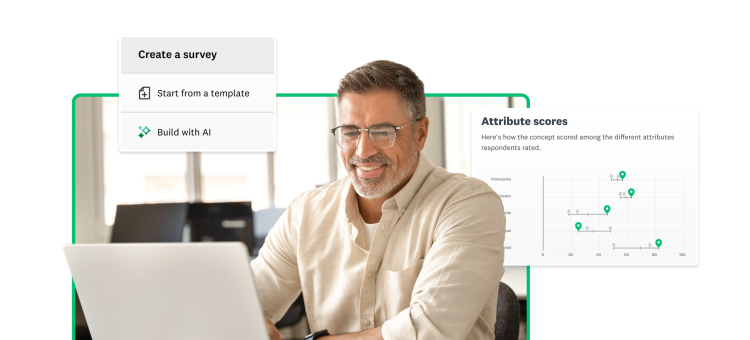Instructional leaders at Madison Area Technical College have built a culture that places high value on student feedback. In 2017, a new policy was created to encourage all instructors to capture student feedback. Shortly after, an operational team was formed. As a member of that team, Director of Assessment Dr. Robin Nickel built and validated a common survey template for course feedback using SurveyMonkey. The template is designed to collect anonymous feedback from students on their challenges and thoughts; it is deployed using the Library feature. Custom training and support are centralized on the college’s Intranet, and more and more faculty are using the tool. As the college’s survey program evolves, more students and instructors will provide feedback that continuously improves teaching and learning at Madison College.
Navigating a changed world for education
When COVID-19 forced an emergency move to fully-remote instruction, Robin and her team knew the school’s 1,275 instructors would be faced with changes no one anticipated. With no time to prepare for the unique needs of online instruction, both educators and students had to adapt on the fly, making compromises and extending patience and understanding to everyone involved. As the crisis continued, it became clear that more online courses would be necessary in fall. In order to best serve faculty and students, the college’s Center for Excellence in Teaching and Learning supported the design of COVID-19 related surveys using SurveyMonkey.
Uncovering individual challenges and patterns
The surveys were designed around three key areas for both student and faculty: technology, instruction, and the future, leveraging questions from expert-written survey templates within SurveyMonkey. The goal of the surveys was to establish an understanding of how students were adapting, what resources were lacking and how both students and faculty felt about implementing permanent online courses.
These surveys had shared questions but also had items aimed specifically at each group. By adding “other” or “none of the above” options with space for respondents to provide context if needed, the college could gather insights to make recommendations and create a go-forward plan while considering first-hand accounts of the individual experiences of all involved.
“I felt we really needed to add a question related to the overall health and challenges of faculty who were suddenly tossed into the unknown. Never in our lifetime have we experienced this level of crisis as a college, country, or world.”
As responses came in from both students and instructors, it was quickly apparent that the “other” option was accounting for a large portion of responses to the question, “What are your top three concerns right now?” Robin notes, “it was as if this one question opened a door for faculty to share their feelings of anxiety about the impact of COVID-19, keeping a schedule, social isolation, and student interaction.” Text analysis tools within SurveyMonkey became vital in understanding the patterns in open-ended responses from respondents. While 68% of responses indicated that faculty were knowledgeable about online delivery, the comments presented a deeper story.
Though both groups said they were adapting fairly well to the changes, only 28% of instructors and 30% of students said they’d be likely to choose remote learning, given the choice. Instructors pointed out how the remote learning model differs from traditional online learning, and students frequently said it wasn’t comparable to in-person classes. Both groups largely felt they had the technology they needed, but that some of the course content could not be fully completed online. Instructors ranked “diminished student learning” as their top concern, and students chose grades as their main worry. The survey comments painted a picture of instructors and students that had the right technology in place, but needed more support in bringing emotional connection and resonance to online learning.
Adapting and bettering education for students
A common theme in the comments from instructors was feeling unprepared to effectively teach online. Recognizing that the choice may be out of everyone’s hands this fall, the college launched 18 sections of its flagship training, Preparing to Teach Online course in summer, with 150 instructors taking part. The college decided 70% of the school’s courses would be online in the fall.
Student responses did show some concern about technology access, food/housing insecurity, and finances, though not nearly at the level expected. Instead, students pointed to time management, motivation, and missing their peers as the biggest challenges. This helped spotlight areas in which the college could better support students. The survey responses also revealed a few areas where communications from the college may have been missed or misunderstood.
“After careful analysis, we found nuggets of clear actionable items. For example, some students mentioned not having Microsoft Office, which the college provides. Many were concerned about how the shift to emergency instruction would affect their grades,” Robin says. “This showed us that we needed to remind them about Office access and clarify the new credit/no credit options.”
As Madison Area Technical College heads into this new era of education, SurveyMonkey will remain an important tool in the school’s arsenal. Robin appreciates that the platform allows her to easily write an executive summary, with clear understandable charts and links to the raw data for stakeholders who want to dive deeper. Getting a look into how students and instructors are managing through the fall will be key to the school’s long-term plan.
Learn how your organization uses surveys and feedback to grow, evolve and adapt post COVID-19 with SurveyMonkey.



